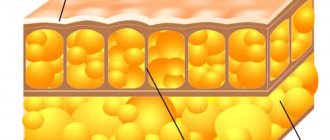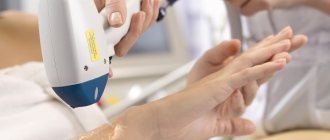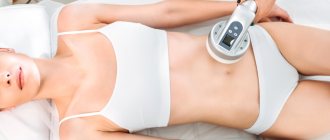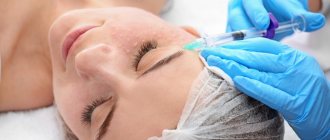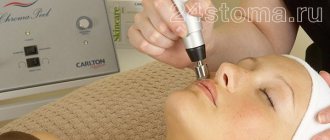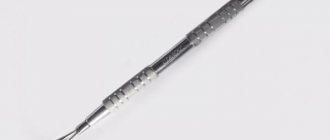Cryolipolysis – what is it?
Our article will help answer the question. Cryolipolysis, cryoliposuction or cold liposculpture is a modern cosmetic procedure that involves body correction without surgery.
Innovative technology that allows you to cool subcutaneous fat, thereby destroying its cells, has already become in demand in many countries and has won fans among visitors to beauty salons.
Next, we will consider all aspects of the procedure, talk about its features, indications and contraindications, and understand the advantages and disadvantages.
Operating principle
The weight loss procedure cryolipolysis was developed by two American scientists: Rox Anderson and Dieter Manstein. The official presentation of the device they created took place in 2008.
The Anderson and Manstein method is based on the following principle. Fat cells, or adipocytes, are unlike other tissues in our body: they are unstable to prolonged exposure to negative temperatures. The purpose of these cells is that they store many substances valuable for the human body (in case of an excess of them), and in extreme situations they release the accumulations to generate energy.
This is what adipocytes look like
The components of the fat layer completely lack mechanisms of protection against the effects of cold. Accordingly, if cold exposure appears, then metabolism and energy processes in the cell are disrupted. If the low temperature continues for a long time, then most cells die; About 40% of the original amount remains “alive.” The death of cells significantly reduces the fat layer.
A clear advantage of this method is that the tissues adjacent to the fat are resistant to cold, and exposure to low temperatures during the procedure does not harm them. After all, everything is thought out in the cryolipolysis apparatus and unexpected frostbite of the skin cannot happen - the control system will prevent this. Typically, the exposure temperature in such a device is less than natural body temperature, but higher than 0 degrees Celsius.
Clinical efficacy and safety of cryolipolysis
The clinical efficacy and safety of cryolipolysis have been studied in human and animal studies. In the latter, a reduction in the fat layer of up to 1 cm, or 40% of its thickness, was recorded after one procedure without damaging adjacent tissues. D. Manstein in his work points to lipid-overloaded mononuclear inflammatory cells detected 2 weeks after the procedure, as well as apoptosis and phagocytosis occurring in adipose tissue. 3 months after the procedure, a lipid profile showed normal cholesterol and triglyceride levels6.
Comparable results were obtained in clinical trials involving humans. A 2009 study involving 10 volunteers noted a reduction in body fat of 20.4% and 25.5%, 2 and 6 months after the procedure, respectively. The results of a retrospective multicenter study authored by K. Diericks were recently published. According to these data, improvements were noted in 86% of the 518 study participants. The most effective effects of cryolipolysis turned out to be in the abdomen, back and sides. As follows from the results of the participant survey, 73% of patients were satisfied with the results of the procedure, and 82% were ready to recommend cryolipolysis to friends. However, the vast majority of volunteers reported minimal or tolerable discomfort during the procedure, and 89% responded positively to its duration.
As a result of a clinical experiment using cryolipolysis in the private practice of a plastic surgeon, out of 528 patients, only 6 were dissatisfied with the results, four of whom changed their opinion to positive after a repeat procedure.
L. Gharibyan used a three-dimensional camera to assess the volume of adipose tissue lost after cryolipolysis. 2 months after the procedure, the volume of fat in the treated and control areas decreased by an average of 56.2 ± 25.6 cubic meters. cm and 16.6±17.6 cu. cm respectively. The difference in fat volume lost between the treated and control areas averaged 39.6 cubic meters. cm.
J. Ferraro, in his uncontrolled study, tried to achieve a synergistic effect of cryolipolysis and shock wave therapy. According to the report, after 3-4 treatments over 12 weeks, the authors were able to reduce the circumference of the treated area by 6.7 cm and the thickness of the fat layer by 4.5 cm.
It should be noted, however, that studies of body contouring results are challenging due to natural variability and low reproducibility of measurements.
The longevity of cryolipolysis results remains unknown. Data are available on only two patients who underwent cryolipolysis on only one side and then recorded intermediate results for 5 years. In this case, the adipose tissue lost after cryolipolysis was not restored, even despite fluctuations in the patients' weight.
Little is known about the duration of the effect of targeted cryolipolysis, however, there is also no data on the ability of adipose tissue to recover after exposure to cold.
As for safety, no side effects that could be associated with cryolipolysis, including scars, ulcers or skin surface imperfections, have been recorded. Despite the known property of low temperatures to enhance fatty granuloma, known studies have not described cases of the formation of subcutaneous nodules.
Expected side effects of cryolipolysis include temporary erythema, bruising and numbness for up to 14 days after the procedure.
Out of 850 thousand procedures performed worldwide, there were only 850 recorded cases of side effects, the most common of which was pain occurring 2 weeks after the procedure. In 33 cases, paradoxical adipocyte hyperplasia was recorded - a condition in which, approximately six months after the procedure, additional fat deposits begin to form in the treated area. The pathogenesis of this phenomenon remains a mystery. Probable methods of eliminating it are liposuction or abdominoplasty, since nothing is known about the possibility of spontaneous resorption of adipose tissue in such cases. S. Coleman, using neurological studies and biopsy, studied 9 cases of loss of sensitivity after cryolipolysis. In 6 out of 9 patients, sensitivity disappeared for a short period of time and was completely restored after an average of 3.6 weeks. The biopsy did not show any changes in the nerve tissue. In two other studies, researchers looked at possible changes in blood lipid levels after cryolipolysis and found no changes. According to the results of the work of K. Klein, in 40 patients 12 weeks after the procedure, no changes in liver function were recorded.
How is the procedure performed?
As already mentioned, the cryolipolysis procedure involves “freezing out” fat cells using a special apparatus.
The procedure is performed by a cosmetologist. Before doing cryolipolysis, you need to consult with him about problem areas, find out if there are any contraindications, and, if necessary, immediately calculate the required number of sessions (as a rule, one to three sessions are enough for a particular area of the body).
Remember that it is not recommended to eat or drink an hour or two before the procedure.
During the session, the patient sits or lies down on the couch. A napkin pre-lubricated with a special gel is placed on the area selected for the procedure. An applicator with or without a vacuum attachment is then placed on this area. When using the nozzle, under the action of a vacuum, a fold of skin enters it, which requires the removal of fat. Cooling elements are applied to the fixed skin fold on both sides, under the influence of which the temperature of the tissue drops. The vacuum holds the fat fold for 40-60 minutes: it is during this time that the cells that form the fatty tissue die.
Mechanism of cryolipolysis
Usually the procedure is painless and does not cause much discomfort in patients. Within a quarter of an hour after the start of the procedure, a slight tingling and feeling of cold may be observed in the treated area, then you may feel a burning sensation or numbness of the skin.
The pressure in the nozzle for the procedure is not constant: its changes create a slight massage effect.
After the end of the session, the nozzle is disconnected, the napkin is removed and the gel is wiped off. In order for the skin to adapt to normal temperature and in order to normalize blood supply, the specialist massages the treated area.
This concludes the procedure, and the client can immediately go about his business.
The breakdown of “frozen” fat cells does not occur immediately. The effectiveness of cryolipolysis can usually be noticed 2-4 months after the session. After 2 months, the volume of the fat layer decreases by 20%, after 4 months – by 40%.
The breakdown products of cells killed by cold are removed from the body naturally: gradually, with the flow of lymph, they enter the bloodstream, and then finally disintegrate in the liver.
Cosmetologists advise drinking more fluids and moving a lot in the first weeks after cryolipolysis - this is necessary so that cell breakdown products do not create stagnation in the body.
Cocoon Cooltech
The Cooltech cryolipolysis apparatus differs from equipment of its class by the presence of 2 handpieces with independent parameters for different zones, which can operate simultaneously. A total of 6 straight and shaped applicators and adapters for hard-to-reach areas are used.
Cocoon Cooltech is a classic device for cryolipolysis with vacuum capture of the skin fold.
Manufacturer: Cocoon Medical, Spain.
Devices for cryolipolysis
The first cryolipolysis device patented in 2008 was Zeltiq (Zeltik) manufactured in the USA. It is still the most popular and is considered the most proven and safe. The device has multi-level protection, which ensures the client’s safety during the session. The thickness of the fat fold for treatment with this device should not be less than 3 centimeters.
An analogue of Zeltiq is the Freezefat device for cryolipolysis, produced in Germany. It is also equipped with a vacuum attachment to capture fat folds.
The Spanish cryolipolysis machine Cocoon has also managed to gain popularity. Its design difference is two working attachments (the so-called maniples), which allow the procedure to be carried out on two areas of the body simultaneously. At the same time, different operating modes can be set for different nozzles.
An important addition to any device is a variety of attachments, designed separately for different parts of the body.
MBT-340
The Chinese MBT-340 device differs from other cryolipolysis equipment in its high power - 2,500 W. This is an energy-intensive device with an unreasonably high vacuum aspiration force - up to 650 mm Hg. Art. The procedure on MBT-340 will be painful for the patient.
FOR REFERENCE
Ekaterina Imshenitskaya
The German ZLipo Med device has a vacuum power of up to 250 mmHg. Art.
The procedure is carried out using 2 manipulators, the settings of which do not depend on each other. Device delivery options:
- 2 applicators;
- 4 applicators.
Manufacturer: MBT-Laser, Beijing Mega Beauty Technology., Ltd., China.
Indications for cryolipolysis
Cryolipolysis can be considered as a separate procedure aimed at body contouring, or as part of a comprehensive program that includes mesotherapy (injections for skin tightening and fat removal), ultrasonic cavitation, lymphatic drainage massage or radiolifting, diet and exercise.
Cryolipolysis is indicated primarily for people who want to change the proportions of their figure, since this procedure can remove fat locally.
Most often, correction is carried out on the following “problem” areas:
- underbelly;
- sides;
- thighs (if desired, you can remove fat deposits in the form of “ears” and “breeches”);
- buttocks;
- area above the knees;
- shins;
- area on the back (under the shoulder blades);
- shoulders;
- forearms.
Cryolipolysis is not performed on the face (with the exception of cryolipolysis of the double chin, for which a special attachment is used), on the neck and in the décolleté area. Also, the procedure is not used if the thickness of subcutaneous fat is small - less than one centimeter.
The cryolipolysis procedure is also indicated in the fight against cellulite (we are talking about a cosmetic defect in the form of an “orange peel”, and not a diagnosis of a disease in which inflammation of the subcutaneous adipose tissue is observed).
A pleasant addition to the main effect is the improvement of metabolism, the removal of toxins and the relief of stagnant processes in the area where the device is used.
Cryolipolysis may be due to the following reasons for excess weight gain:
- Alimentary-constitutional. In this case, excess weight gain occurs due to a sedentary lifestyle, excessive consumption of high-calorie foods, and compulsive overeating.
- Hypothalamic. Obesity is provoked by disorders of the nerve center responsible for eating behavior, which manifest themselves in regular heavy overeating.
- If the endocrine system malfunctions, as a result of which metabolic processes in the body are disrupted, and fat does not disappear even with severe dietary restrictions.
- Mental disorders can also cause uncontrolled fat gain. Psychotropic substances taken by the patient also have an effect.
However, people with such causes of excess weight need to simultaneously undergo therapy for the underlying disease and psychological correction of the causes of overeating. Otherwise, no cryolipolysis will help: the weight lost due to the procedure will stubbornly return to its place.
CosmeStar CRYO X
The German device CosmeStar CRYO X works on a combination of low-temperature and radio frequency effects. Cryolipolysis, monopolar RF lifting and radio wave lipolysis procedures are performed on it.
ATTENTION!
Ekaterina Imshenitskaya
CosmeStar CRYO X is presented in the review as an example of equipment with cooling plates, rather than a vacuum.
For the procedures, 4 applicators are used: 1 large, 2 medium and an RF applicator.
Manufacturer: CRYO X, Germany.
Contraindications for cryolipolysis
Despite the apparent universality of the method, crilipolysis has contraindications. This:
- cold allergy;
- Raynaud's syndrome (disorder of blood circulation in the vessels of the feet and hands);
- skin diseases;
- skin damage, scars;
- very loose and stretched skin;
- hernias in the areas where the device operates;
- taking medications that reduce blood clotting (anticoagulants);
- pregnancy and lactation;
- blood circulation disorders;
- severe obesity;
- with a pacemaker or metal implants installed;
- diabetes;
- diseases of the liver, kidneys, excretory system;
- pathologies of the cardiovascular system;
- with uterine fibroids.
In women, cryolipolysis can also have negative consequences for cysts of the ovaries or other internal organs.
A temporary contraindication is considered to be the period of menstruation.
Effect and results of the procedure
One cryolipolysis procedure can remove 20-30% of fat deposits in the selected area. To achieve 100% results, it is recommended to conduct 3-4 sessions. This counts as one course. The course can be repeated no earlier than after 4 months. One session is carried out once every 2 months.
The first reduction in volume can be noticed after a few weeks or a month. The process of breaking down fat deposits and removing them from the body takes place individually for everyone. This is due to the different time frames for obtaining the first results.
The final effect of the procedure will be noticeable after 3-4 months from the date of the last session.
Cryolipolysis - before and after
Possible side effects
If the cosmetologist who performed the session is a professional, and the quality of the equipment is not in doubt, then side effects or complications after cryolipolysis rarely appear.
The most common of these is paleness or redness of the skin, or the appearance of a hematoma at the site of vacuum exposure. This occurs due to a lack of planning of the procedure, or due to the increased sensitivity of the client’s skin. Bruises cannot be corrected immediately: it will take more than a week for the hematoma to completely disappear.
The client may also complain of a feeling of cold, swelling, numbness, loss of sensitivity or slight pain after cryolipolysis in the treated area immediately after removing the attachment. These phenomena depend on the individual characteristics of a person. They usually go away within a few minutes. If this does not happen, the symptoms and pain intensify, cramps and swelling appear - this is a reason to consult a doctor.
Coolsculpting
The Coolsculpting device is the world's first device for cryolipolysis - non-surgical lipoxation using low-temperature exposure. The equipment manufacturer, Zeltiq, received FDA approval for this technology in 2010. Coolsculpting performance characteristics:
FOR REFERENCE
Ekaterina Imshenitskaya
A cryolipolysis session lasts on average 60 minutes.
- cooling temperature -10°C - if it drops to -11°C, the warning system will stop the procedure;
- 6 standard vacuum manipulators for working on the body and face and a Cool Advantage applicator with removable attachments, which reduces session time to 35 minutes;
- automatic calculation of exposure time and temperature to prevent tissue frostbite.
IMPORTANT!
Ekaterina Imshenitskaya
The procedure protocol is recorded on an eZ-chip, without which the equipment will not work. This approach is implemented only in Coolsculpting.
Manufacturer: Zeltiq Aesthetics, USA.
The effectiveness of the method in comparison with other procedures
The described fat removal method, like any other, has its advantages and disadvantages. Below are the main ones.
Benefits of cryolipolysis:
- Excess fat layer is removed without surgery. This advantage proves the uniqueness of the technology, because the patient avoids many risks associated with the operation, such as infection, exposure to anesthesia drugs, disruption of skin aesthetics due to incisions, etc.
- Cryolipolysis allows you to model your figure, while diets and sports can only reduce the percentage of body fat in accordance with the natural proportions of a person. For example, you can do cryolipolysis of the abdomen or thighs, and the subcutaneous tissue of the buttocks will remain intact.
- The technique allows you to get rid of the “orange peel” and also improves the appearance of the skin due to the normalization of metabolic processes in the treated area.
- The risk of intoxication of the body or the appearance of a stressful situation is very low, since fat is broken down gradually, and the body has time to adapt to changes (unlike the period after liposuction). Cell fragments and toxic substances from their decay are removed from the body naturally.
- Due to the gradual and long-term removal of dead cells, there is no load on the liver and kidneys.
- The treated area looks natural and does not differ from nearby skin areas. This distinguishes this procedure from radical methods of fighting fat by “pumping it out”.
- The session is painless in most cases.
- The procedure takes up to an hour, which can easily fit into the schedule of even the busiest person.
- After a session of “freezing out” fat, you can immediately go about your current affairs; there is no rehabilitation period.
- The procedure does not depend on the time of year and does not oblige you to change your lifestyle after it.
- The effect of cryolipolysis is persistent, since dead fat cells will no longer be renewed.
Disadvantages of cryolipolysis:
- From the moment of the procedure until visible results appear, up to four months pass (in this, the liposuction method or a low-calorie diet have an undoubted advantage).
- There are a number of contraindications and side effects.
- You cannot treat a large area of the body at once. And the impact on different areas in turn increases the time of the procedure and its cost.
- The procedure is not cheap. Therefore, if you are not ready to make an expensive investment in your appearance, then budget alternatives (for example, diet and exercise) will be relevant.
Advantages and disadvantages of the method
Since the breakdown of fat under the influence of cold occurs gradually over 2-3 months, this fact gives the cryolipolysis procedure a number of significant advantages over other methods of getting rid of excess fat.
Thus:
- at a low rate of cell death, the normal functioning of the body is not disrupted, as, for example, when using other traumatic methods;
- gradual destruction and death of cells allows the lymphatic system to successfully cope with the removal of waste products that are formed after apoptosis;
- slow cell death does not cause intoxication of the body, so there is no need for additional procedures such as lymphatic drainage, massage, etc.
- in areas of exposure to cold and death of fat cells, depressions do not form, since subcutaneous redistribution of adipose tissue occurs and a uniform decrease in the volume of the entire area of influence;
- the mechanism of action is based on the natural biological processes of our body;
- removal of adipose tissue occurs without surgical intervention, so there is no harmful effect of anesthesia on the body;
- since there is no damage to the integrity of the skin, there is no risk of infection, scars or postoperative scars;
- there is no need to wear special shapewear;
- the method has multidirectional capabilities, in one case it will help you lose extra pounds, in another it will even out and polish the surface of the skin in those areas where physical exercise and massage do not help;
- the method helps to lose weight locally, that is, remove excess fat only on the hips or stomach;
- the method is comfortable and safe;
- the procedure is ideal for busy women, since no more than 4 procedures are needed to get a noticeable result;
- the procedure can be performed at any time, regardless of the season of the year.
The disadvantages of the method include:
- there is no immediate result, as is usually the case with other methods;
- there is a large list of contraindications;
- the method is classified as an expensive procedure;
- it is impossible to properly treat some areas of the skin;
- There is a risk of developing some side effects and complications.
The effectiveness of cryoliposuction
Using this technique, you can reduce the amount of fatty tissue in certain areas of the body. However, it will not help you lose weight completely. A good effect is observed in that category of people who play sports, adhere to proper nutrition, but at the same time cannot get rid of excess in certain areas - on the hips, stomach or shoulders. According to reviews, the first visible changes can be detected approximately 3 weeks after the course.
In 1 session, about 20% of fat cells can be removed. To achieve a significant result, the procedure must be repeated 3 or 4 times.
The effect of cryoliposuction is considered more lasting compared to diets or physical training. This is explained by the fact that with a low-calorie diet, adipocytes “dry out”, and with cold treatment they are completely destroyed and disappear.
You can enhance the effectiveness of the procedure through exercise and a balanced diet. In addition, it can be combined with other methods of influence - massage, mesotherapy, etc.
Indications for cryoliposuction and contraindications for the cold liposuction procedure
The technique under consideration is used for local weight loss and elimination of problem areas on the body.
Corrections are often made to:
- Lateral and anterior surfaces of the abdomen. It is quite difficult to reduce volumes in these areas due to regular hormonal replenishment. Under the influence of cold, the energy resources of fat cells in such areas will be depleted.
- Hips.
- Knees.
- Back.
- Inner surface of hands.
This procedure is also suitable for patients who do not have enough time to recover.
In one session, on average, you can get rid of up to 7 kg.
If you want to smooth out the contours of cellulite, cold liposuction should be combined with carboxy and ozone therapy.
Cryolipolysis cannot be prescribed if the following conditions are present:
- Hypersensitivity of the skin to low temperatures.
- Excess obesity.
- Severely stretched skin.
- Small local areas: chin, cheeks, etc.
- The period of bearing a child and breastfeeding.
- Presence of a pacemaker or metal implants.
- Damage to the skin, scar changes, poor circulation, as well as the presence of a hernia in the manipulation area.
- Raynaud's disease.
- Disorders associated with blood clotting, as well as taking blood thinning medications.
- Taking certain hormonal medications.
- Mental disorders.
